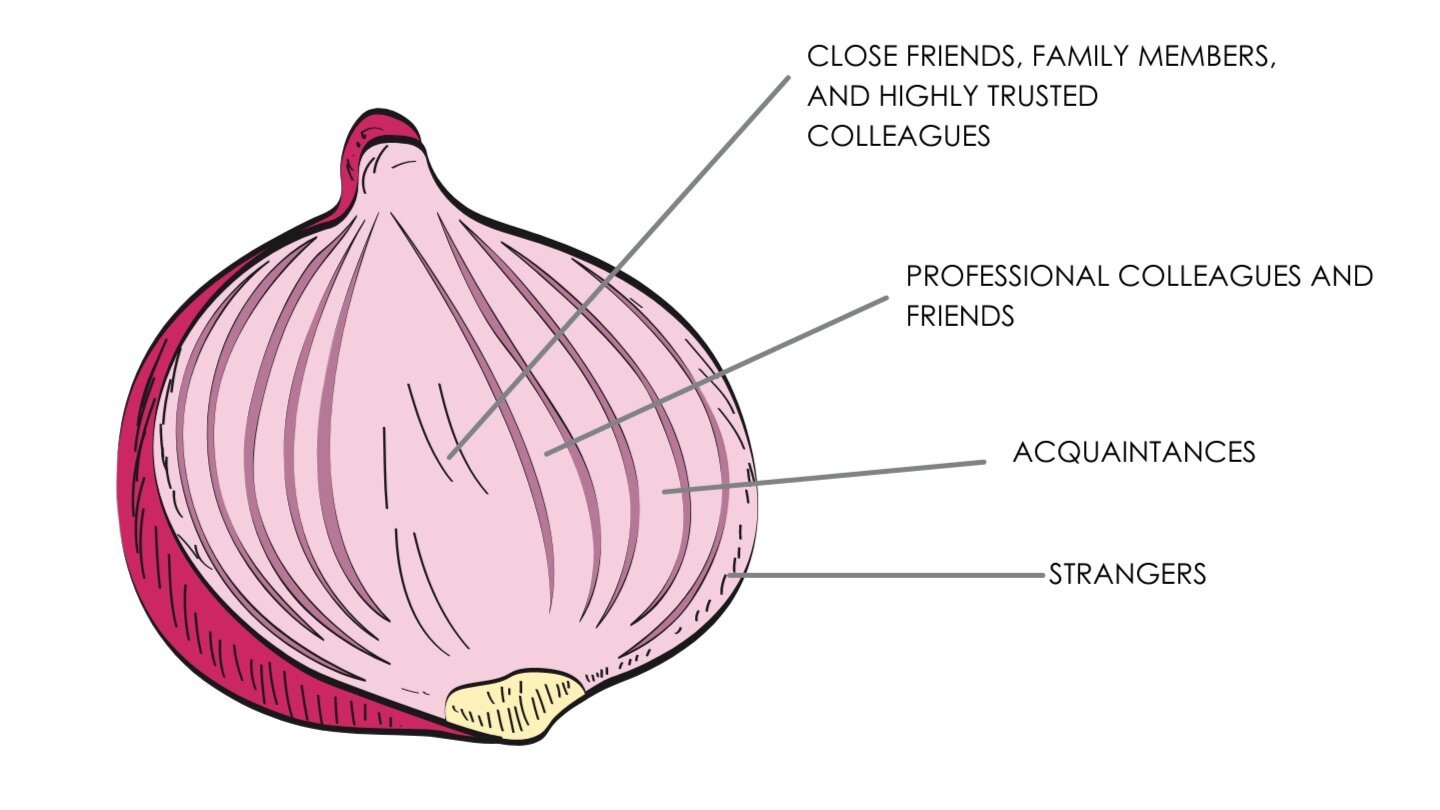VULNERABILITY IS LIKE AN ONION
Vulnerability has become a hot topic in recent years.
Marketing strategists suggest being vulnerable as a way to connect with potential clients.
Team members tell their leaders that they want them to be vulnerable and open.
Strangers at networking round tables suggest that they want us to share vulnerably about our business challenges.
Online, vulnerability has evolved to new extremes, with influencers sharing in confidence with their millions of followers; posing in their underwear; and allowing us into the most private crevices of their lives, homes, and bathrooms.
Our societal appetite for vulnerability is high.
And yet, as we push edges of what vulnerability means and looks like, we must pause to consider that which needs to come first.
PSYCHOLOGICAL SAFETY
Psychological safety is being able to show and employ one's self without fear of negative consequences of self-image, status or career (Kahn). In short, it means that it is safe to take risks—in this case, the risk to be vulnerable.
Arguably, social media, by its very nature, is psychologically unsafe. There is not a consciously designed container, there are not clear agreements or operating principles, and there are rarely consequences for vitriolic behavior. In recent years, we have watched individuals in the public eye get canceled, bullied, harassed, and even receive death threats for something they said or didn’t say on social media.
Perhaps we’ve had a challenging experience with an acquaintance or colleague, where we vulnerably shared something that was then used against us.
Vulnerability is not a one-size-fits-all invitation. Instead, it is something we can practice in trusted relationships when psychological safety is high. Without trust and psychological safety, the conditions for vulnerability do not exist.
We can think of vulnerability like layers of an onion. Vulnerability might look different with those in our trusted circle than it does with a stranger on the street or a colleague who has acted without integrity in the past. This doesn’t mean that we can’t be honest and open with those in our outer circles, but it does offer permission to pause and consider whether the conditions for vulnerability exist, and then, how we can proceed accordingly.
While this isn’t a precise science, the layers of the onion might look something like the above graphic, with highly trusted individuals at the center of the onion.
In our work and our lives, we can consider:
In what relationships or situations do I have a high level of psychological safety?
Within which relationships does it feel safe to share vulnerably?
Who are my trusted few: the handful of people with whom I can share openly and honestly, without fear of judgment?
Are there any ways in which I’m using vulnerability as a “tactic,” which may or may not be serving me or others?
As leaders, colleagues, and friends, we can consider:
Am I creating psychological safety for those on my teams and projects?
Am I creating an environment where people can safely be who they are, without fear or judgment?
Am I creating psychological safety not only at work, but also with my friends and family members?
Are there any ways in which I am intentionally or unintentionally using other people’s vulnerability against them? What could it look like to pay attention, notice, and shift accordingly?
How can we create an environment that welcomes not only openness and vulnerability, but also healthy and respectful discourse?
Vulnerability is not a one-size-fits-all solution. Vulnerability thrives within the context of psychological safety. We need both in order for this equation to work.
What do you think? Are there any areas in which you have vulnerability without psychological safety, or perhaps psychological safety without openness and vulnerability?
If you’d like, please feel free to share your thoughts in the comments.
Thanks for reading.


